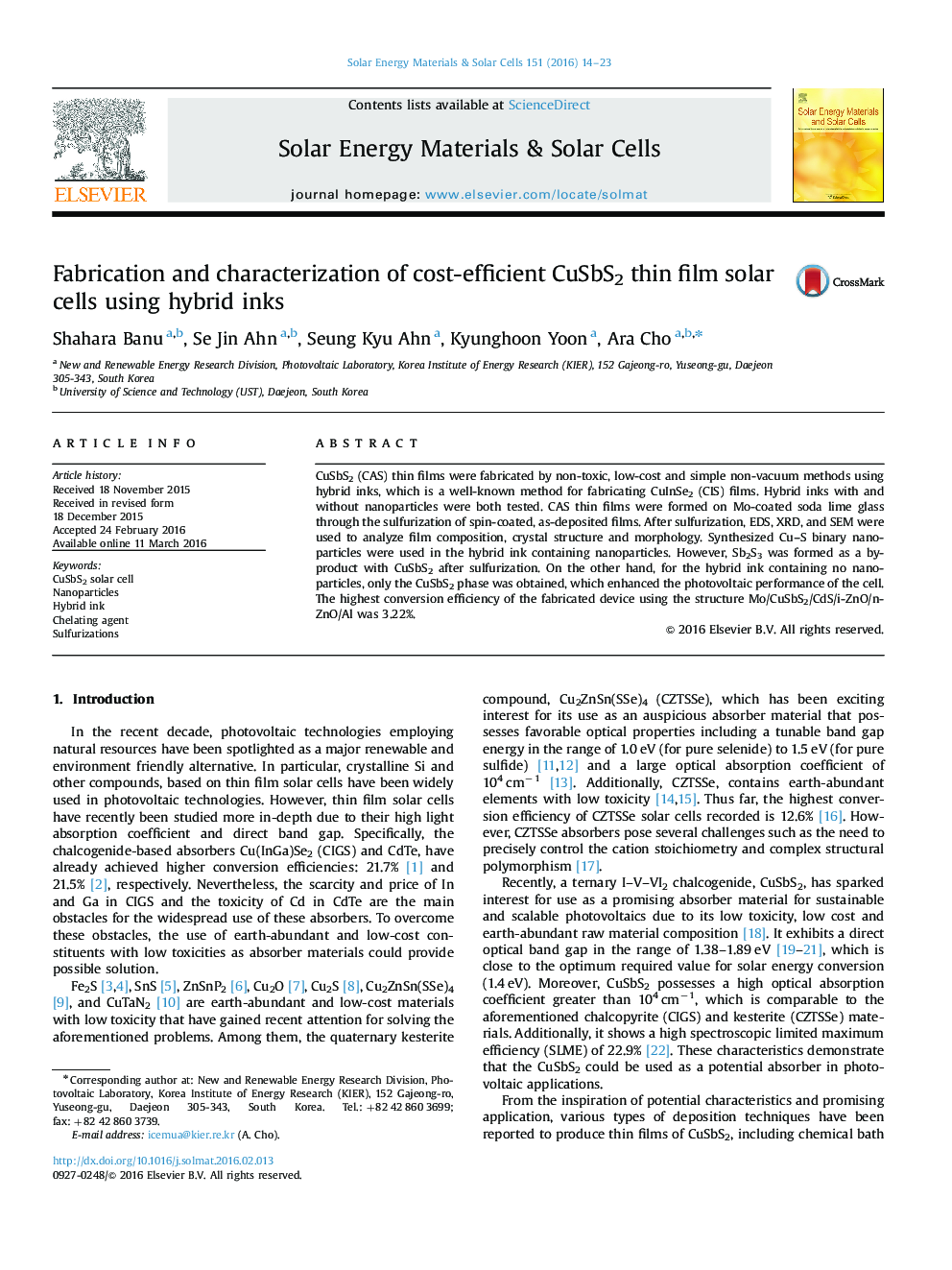| Article ID | Journal | Published Year | Pages | File Type |
|---|---|---|---|---|
| 77598 | Solar Energy Materials and Solar Cells | 2016 | 10 Pages |
•Two types of hybrid inks were approached: hybrid ink with and without nanoparticles.•Thin films using hybrid ink with nanoparticles contained a binary phase as a by-product.•The highest conversion efficiency 3.22% was achieved by hybrid ink without nanoparticles.
CuSbS2 (CAS) thin films were fabricated by non-toxic, low-cost and simple non-vacuum methods using hybrid inks, which is a well-known method for fabricating CuInSe2 (CIS) films. Hybrid inks with and without nanoparticles were both tested. CAS thin films were formed on Mo-coated soda lime glass through the sulfurization of spin-coated, as-deposited films. After sulfurization, EDS, XRD, and SEM were used to analyze film composition, crystal structure and morphology. Synthesized Cu–S binary nanoparticles were used in the hybrid ink containing nanoparticles. However, Sb2S3 was formed as a by-product with CuSbS2 after sulfurization. On the other hand, for the hybrid ink containing no nanoparticles, only the CuSbS2 phase was obtained, which enhanced the photovoltaic performance of the cell. The highest conversion efficiency of the fabricated device using the structure Mo/CuSbS2/CdS/i-ZnO/n-ZnO/Al was 3.22%.
